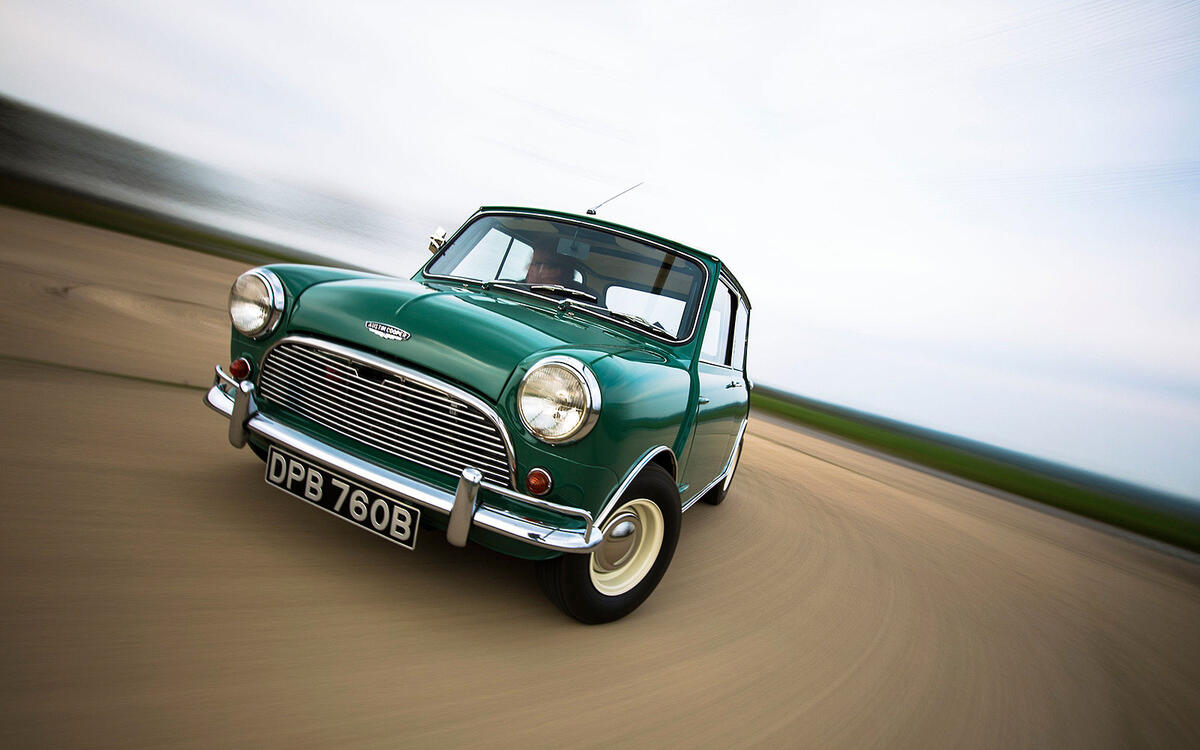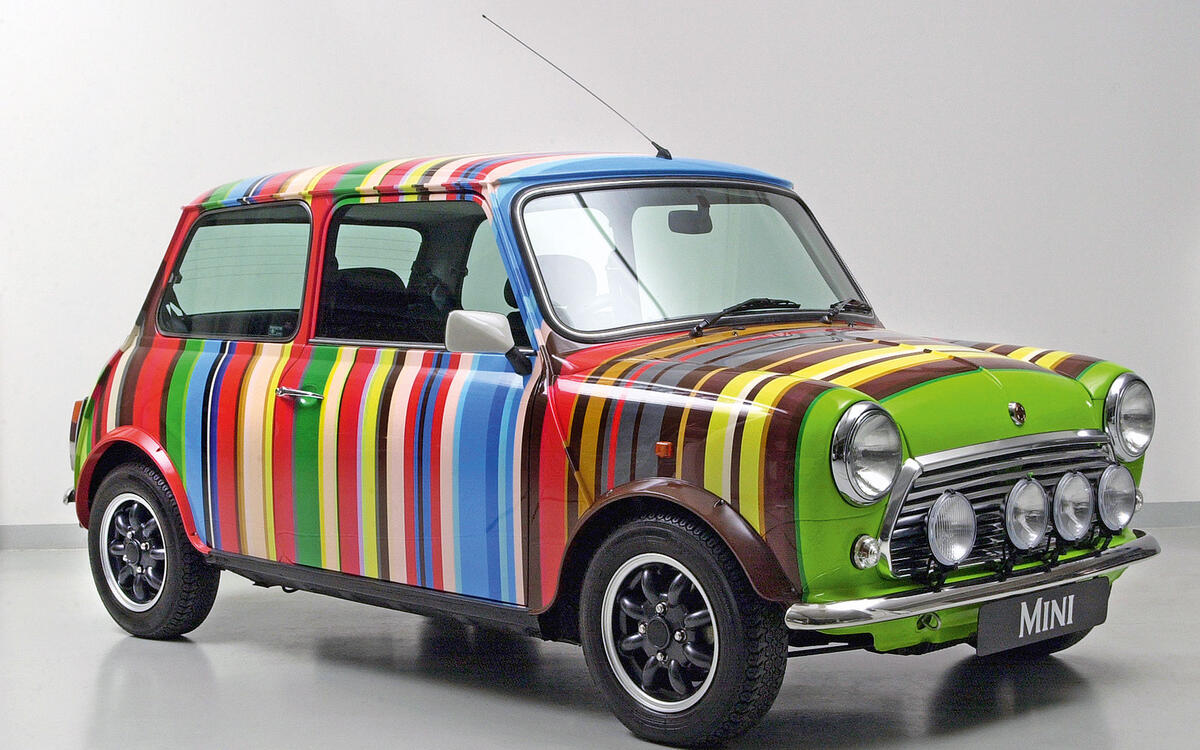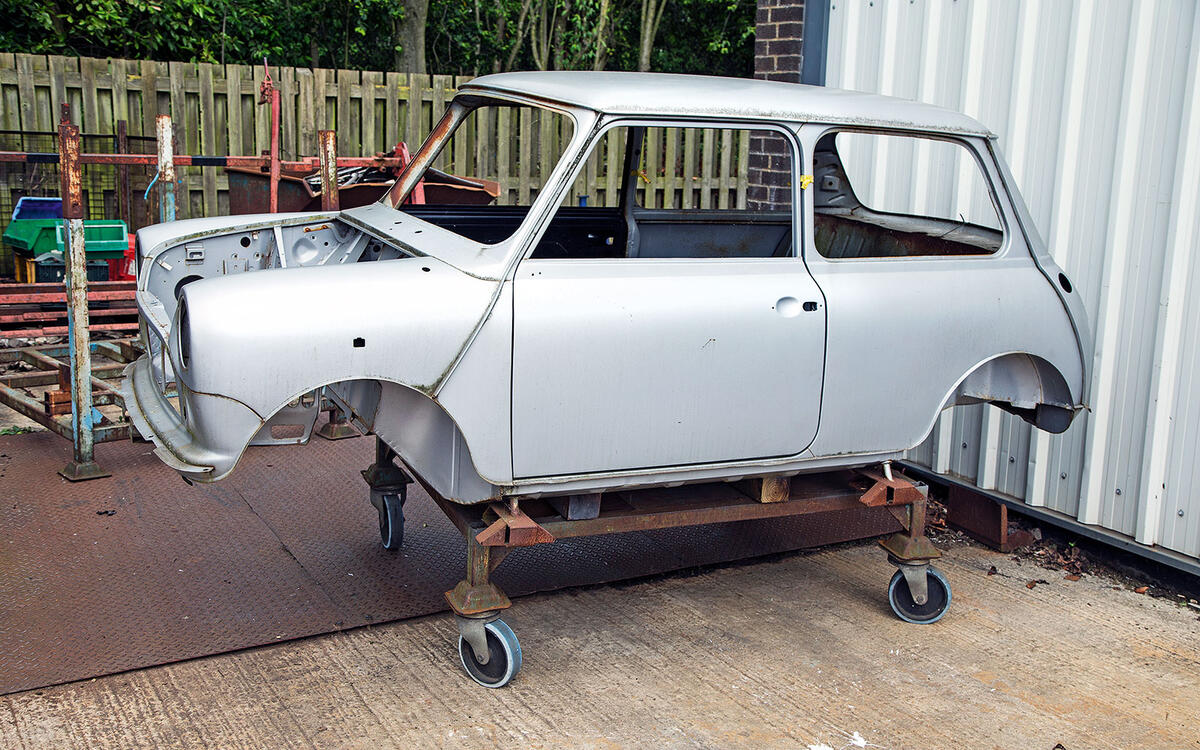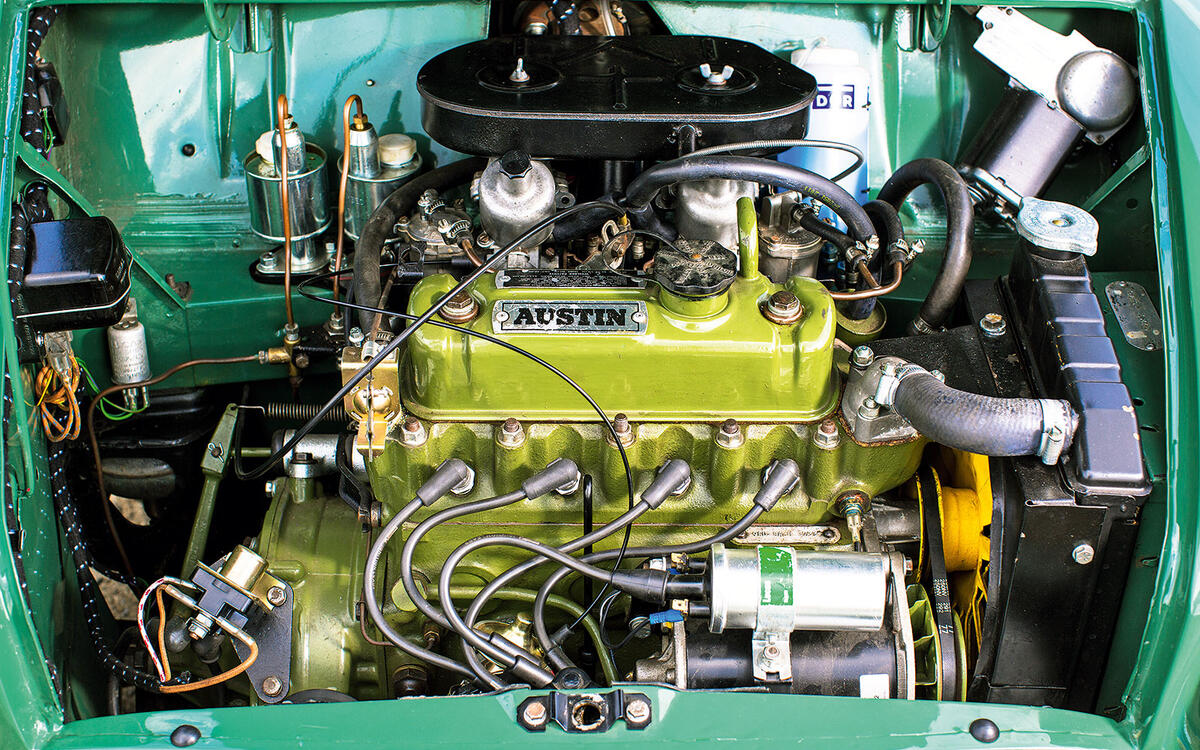 Slide of
Slide of
Mini celebrates its 60th birthday in 2019.
Arguably Britain's single most-loved car, it has woven itself into the country's national fabric like no other - and unlike Jaguar E-Types and Aston Martins, practically everyone has been in one at one stage or another - and not a few of us have owned them, including me.
If you'd like to join the club, let's take a look at the best ones you can get - and learn about the warning signs to look out for when choosing one:
 Slide of
Slide of
Wolseley Hornet (1969) - 73,951 miles - £8000
It has a bustle boot, chrome, wood and a badge that lights up. As period Minis continue to rise exponentially, these finned curios stand out from the crowd and are relatively cheap. Get a Mark 2 with a 998cc engine which you could Cooperise. Just 8504 Mark 3s (1966-1969) with no door hinges and wind up windows were made.
 Slide of
Slide of
Mini Moke (1989) - 40,000 miles - £8995
Who wouldn’t want the spin off from a military project, even if it doesn’t quite have G-Wagen levels of terrain crushing ability? It looks cool, or at least fun. Launched in 1964 as a commercial vehicle, original UK ones are now £25,000.
Production later moved to Australia and you can get those for £15,000. Portuguese versions from the 1980s and 1990s are best value, from around £9000.
 Slide of
Slide of
Ice cream van (1967) - 61,400 miles - £29,999
The great thing about the subframe platform is that it could be turned into just about anything. Even an ice cream van. It was nice to find one based on a 1967 Austin Mini Estate with the Wall’s logos. The trouble with these, and burger van variants, is that they were worked to death, so survivors are now Cooper money.
 Slide of
Slide of
Mini Cabriolet (1991) – 40,000 miles - £15,000
Here was a taste of things to come: a German Mini. In 1991 Autohaus Lamm, a German Rover dealer, took the roof off a Cooper to create the world’s most expensive pram. It cost £12,250 and just 75 were made. Rover sold ‘em, then got Karmann to design a better one and it built 300 examples at Longbridge. Good luck finding one.
 Slide of
Slide of
Paul Smith (1998) - £10,999 – 40,000 miles
The stripey Paul Smith concept looked promising, but the production execution was a tad dull. It had a gold badge and a daft ‘true Brit’ relief map of the British Isles on the grille. It also had leather seats, magnolia clocks, and Smith signatures all over the place. 300 were made for the UK and most of the 1800 built are in Japan.
 Slide of
Slide of
MINI JCW WC50 (2010) - 34,000 miles - £15,990
The WC50 stood for World Championship 50, the anniversary of Cooper’s title win. Almost as hand-built as the original Minis it was pulled off the line at Oxford and modified with a plaque, nice Connaught Green paint job, sat-nav, keyless go, heated leather seats, climate control, and Harman Kardon hi-fi plus a full complement of carbonfibre trim.
 Slide of
Slide of
JCW GP (2006) - 76,000 miles - £11,989
2006 was a jolly good year for the MINI and Cooper S when 2000 GPs were built, with Bertone involvement and fewer than 500 were available in the UK. It didn’t have rear seats, which were always pointless anyway, it sat 10mm lower, had a limited-slip diff and a whopping 218bhp. That meant a 149mph top speed and getting to 62mph in 6.5 seconds.
 Slide of
Slide of
Cooper S (1996) - 60,000 miles - £7,000
The Cooper was king in the ‘90s. It came back with a vengeance and saved the brand. Avoid the ‘difficult’ 5 speed gearbox and the ‘caution wide load’ Sportspack which causes reliability and handling issue. Just 250 of the 90bhp S Works were built. Otherwise choose a Japanese re-import with added air-con and even automatic gearboxes.
 Slide of
Slide of
Mini Cooper Clubman (2012) - 57,000 miles - £8,900
The new Clubman is one of the best modern MINI oddities with the lowest sales figures and the inappropriately positioned side door in right-hand drive markets. It came in Cooper flavours of course and those are great value. The S is a 140mph van and it's hard not to love the retro, but always practical, split rear doors.
 Slide of
Slide of
Mini Clubman 1275GT (1980) - 54,000 miles - £13,995
It was the only stylistic revamp in Mini’s 41-year run and the blunt front wasn’t a good look back then, except that it meant a lot more elbow room under the bonnet. The 1275GT wasn’t quite a Cooper S, so were used, abused and rusted away. Now, they look retro-cool, and are elatively affordable in the performance Miniverse.
 Slide of
Slide of
So you want a Mini? Here’s what to look out for…
Bodywork: All Minis since the dawn of time rot. Distinguish between surface rot on the seams and the structural stuff such as new sills and floors. On 1990s Minis the rubber window seal constantly traps water. A lack of sealant compound made the problem even worse and only genuine parts panels fit. Also the air vent pipe that runs under the offside wing rubs against the metal and eventually bubbles through at the top.
Gearbox: Second gear synchro wears out. An exchange gearbox plus fitting is going to cost more than £1000.
 Slide of
Slide of
Wheels/Brakes:
Those great big 13in Sport pack alloys look good, but contribute to prematurely worn wheel bearings and ball joints. Neglected Minis have seized brake cylinders. The rear drum set-ups will rust in time, whilst the front discs can wear very thin. Listen for knocking driveshafts on the move on a test drive.
Subframes: Rears rust - just a fact of Mini life.
 Slide of
Slide of
Engine:
The great, or possibly really dreadful thing about the A-series engine is that they still work, even when technically worn out. The oil pressure gauges fitted to earlier cars are not always reliable. Watch out for oil being burnt in worn bores and look for oil leaks, especially at the back of the block.
Look out for oil being burnt, such as blue smoke from the exhaust and listen for the rumble of about-to-expire big ends. Noisy tappets are easy to deal with, but rattling timing chain will need attention eventually. PICTURE: James with his own Mini Cooper
 Slide of
Slide of
Engine:
A low mile injection Mini seemingly in perfect condition can flunk the MOT emissions test. Left standing for too long and the ECU resets itself to factory specification, so what needs to be a done is a good 30-mile road test so that it can recalibrate itself. Don’t worry you won’t need a new cat or lambda sensor.
As Mini celebrates its 60th birthday in 2019, we take a look at the best used models buy - and warn of what to look out for when choosing one
Advertisement
































